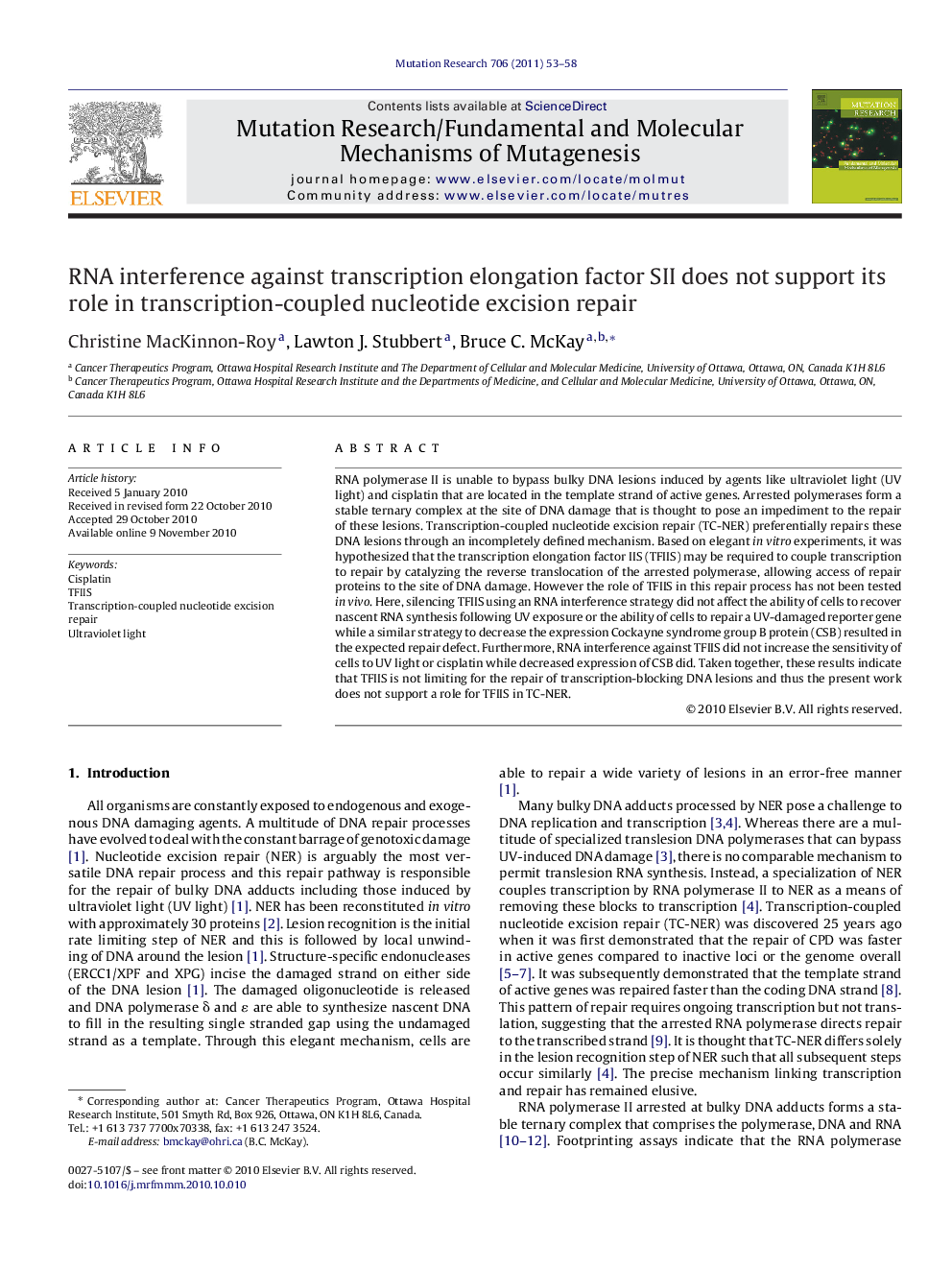| Article ID | Journal | Published Year | Pages | File Type |
|---|---|---|---|---|
| 2146700 | Mutation Research/Fundamental and Molecular Mechanisms of Mutagenesis | 2011 | 6 Pages |
RNA polymerase II is unable to bypass bulky DNA lesions induced by agents like ultraviolet light (UV light) and cisplatin that are located in the template strand of active genes. Arrested polymerases form a stable ternary complex at the site of DNA damage that is thought to pose an impediment to the repair of these lesions. Transcription-coupled nucleotide excision repair (TC-NER) preferentially repairs these DNA lesions through an incompletely defined mechanism. Based on elegant in vitro experiments, it was hypothesized that the transcription elongation factor IIS (TFIIS) may be required to couple transcription to repair by catalyzing the reverse translocation of the arrested polymerase, allowing access of repair proteins to the site of DNA damage. However the role of TFIIS in this repair process has not been tested in vivo. Here, silencing TFIIS using an RNA interference strategy did not affect the ability of cells to recover nascent RNA synthesis following UV exposure or the ability of cells to repair a UV-damaged reporter gene while a similar strategy to decrease the expression Cockayne syndrome group B protein (CSB) resulted in the expected repair defect. Furthermore, RNA interference against TFIIS did not increase the sensitivity of cells to UV light or cisplatin while decreased expression of CSB did. Taken together, these results indicate that TFIIS is not limiting for the repair of transcription-blocking DNA lesions and thus the present work does not support a role for TFIIS in TC-NER.
